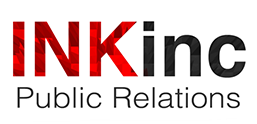One of the best ways to tell your audience why your company/product/service is a great fit for them is by sharing examples of happy customers. Many media outlets, particularly trade media, appreciate real-world examples over generic PR platitudes.
“I’ve got tons of happy customers,” you say. “That shouldn’t be a problem.” Maybe. The problem is there’s a big difference between having happy customers and having a good customer story that can be shared with the media.
Here are three quick signs you have a media-worthy customer.
1. They’re willing to talk, on the record, with a reporter, in an interview. Many times clients will point to great reviews or testimonial quotes on their website. Or even meticulous case studies/white papers that show how they’ve helped a particular customer. Those are great. But what a reporter really wants is to actually have a conversation with your customer. Being quoted on your website or being mentioned in a case study is fine. But for the media, that’s just a start. More often than not, they’ll want to talk one on one with your customer to hear about their experience. They may have questions that weren’t answered in a case study or white paper. It can be tough to get a customer to agree to that kind of extra work on their part. But it can definitely make a huge difference with the media.
2. They can share specific benefits/savings/improvement. For many media outlets, it may not be enough for your customer to say that your software product “increased productivity”. By how much? To what end? What were you able to do with the extra time/effort you saved? That kind of specificity will help tell your story, and help you relate to the audience consuming the story. Specific data on how you helped your customers makes your story much more attractive. This is often the hardest thing to get. Your customers may not want to share how much you saved them or helped them improve their processes, because to them it may look like an admission that they were doing things poorly before you came along. But without this information, it’s hard for the media to justify sharing your story. If their audience can’t get valuable information from what you share, it’s not worth it for them to do a story.
3. They are truly an evangelist for your company. This is a tough one as well. There’s a difference between a customer who is happy and a customer who actively wants to share with the world how awesome you are. I’ve had many circumstances where I’ve been on the phone with the customer of a client and they’ve had a hard time expressing the value proposition of the company they’re working with. And that’s ok. They’re not experts on your business. They’re experts on their business. But in order to make their story relate to the media, and relate to the audience the media is trying to serve, your customer has to be able to think and see and speak in bigger picture terms about you and what you do.
A good PR partner can help you identify customers that fit these criteria, and help you determine the best way to use these customers to get maximum media coverage. Just understand that we can sometimes be picky. That’s because we know the media will be, too. But with a little (ok maybe a lot) of digging, you should be able to turn up these nuggets of PR gold.
